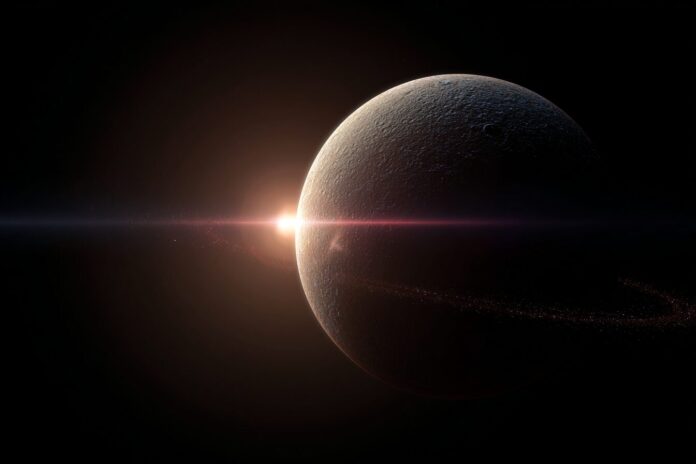Unveiling 2017 OF201: An Extraordinary Discovery Beyond Neptune
New dwarf planet at solar system’s edge. Astronomers have identified an extraordinary trans-Neptunian object (TNO), named 2017 OF201, which could be a new dwarf planet and reshapes our picture of the farthest reaches of the solar system. This object’s highly unusual orbit and significant size make it a compelling subject for researchers and stargazers alike.
The Discovery: Scanning the Solar System’s Frontier
Sihao Cheng and his colleagues at the Institute for Advanced Study in Princeton uncovered 2017 OF201 while analyzing archival telescope data. Their advanced computational techniques revealed a distinctive and previously unnoticed orbital path — a feat demonstrating the power of contemporary astronomical methods. Officially announced by the International Astronomical Union’s Minor Planet Center in May 2025, the detection quickly captured the attention of the astronomical community[2][3].
What Makes 2017 OF201 Unique?
This object is not your average distant rock. Most importantly, 2017 OF201’s orbit is both extremely wide and highly elliptical. Its aphelion, or the farthest point from the Sun, lies over 1,600 times farther than Earth’s distance from the Sun. Yet even its perihelion—the closest approach to the Sun—remains about 44.5 times Earth’s distance, placing it in a comparable region to Pluto at its nearest[2][3]. Because of this, the new dwarf planet at solar system’s edge challenges previous assumptions about the emptiness of space beyond Neptune.
Besides that, its size potentially qualifies it as a dwarf planet, just like Pluto. Researchers estimate it is among the largest objects yet observed so far from the Sun, making it scientifically important for ongoing studies of the solar system’s evolution[2][3].
How Does This Discovery Impact Planet Nine Theories?
Interest in objects like 2017 OF201 has been intense because their orbits may hint at the existence of an undiscovered giant—often dubbed Planet Nine or Planet X—lurking far beyond Pluto. Some researchers believed the unusual and clustered orbits of several distant objects could only be explained by the gravitational pull of an unseen massive planet[1].
However, the orbit of 2017 OF201 is different from other distant objects previously studied. Therefore, its trajectory does not fit neatly with some models of the proposed Planet Nine. This finding does not completely rule out Planet Nine, but it does challenge the specifics of those theories. Researchers like Cheng are running new simulations to understand whether 2017 OF201’s orbit is stable and if it might feel the influence of a distant planet yet to be discovered[1].
What Does This Mean for the Kuiper Belt and Beyond?
The discovery of 2017 OF201 is a reminder that the outer solar system remains a frontier of surprises. For a long time, astronomers thought that the space beyond Neptune, especially past the Kuiper Belt, was nearly empty. Yet, this find demonstrates otherwise—the solar system’s fringe is more populous and dynamic than previously understood[2][3].
Because new objects like 2017 OF201 keep emerging, our knowledge of the solar system’s structure, history, and the forces shaping its boundaries continues to evolve. The presence of such massive TNOs might eventually rewrite textbooks and illuminate how the solar system formed and changed over billions of years.
The Road Ahead: Searching for More Distant Worlds
Ultimately, the story of 2017 OF201 is just beginning. Most importantly, further observations, simulations, and perhaps new survey missions will help clarify whether this object is just one of many still hiding in the darkness. Each discovery informs the ongoing hunt for the elusive Planet Nine and reshapes our cosmic perspective.
For now, one thing is certain: the edge of our solar system remains a place of immense mystery, holding secrets that could transform what we know about our celestial neighborhood.
References
- Science News: A possible new dwarf planet skirts the solar system’s edge
- Institute for Advanced Study: An Extreme Cousin for Pluto? Possible Dwarf Planet Discovered at Solar System’s Edge
- Phys.org: An extreme cousin for Pluto? Possible dwarf planet discovered at the solar system’s edge
- Space.com: Scientists found a possible new dwarf planet — it could spell bad news for Planet 9 fans



